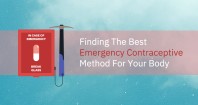
How to Reduce Risk of Type 2 Diabetes
Diabetes is a disease that causes many deaths around the world and adds to the risk of other health problems like blindness, kidney failure, heart attacks, stroke, and amputations.
Type 2 diabetes is the most common form of the disease. Of the people in the United States with diabetes, the CDC says 90 to 95 percent have type 2, versus the much smaller number with type 1. Type 1 diabetes is caused by an unknown factor, which means the body has deficient insulin production. Type 2 diabetes results when the body uses its insulin ineffectively.
While the disease is very prevalent, it’s not unavoidable. While more than 30 million Americans have diabetes, 84 million additional Americans have pre-diabetes, meaning their blood sugar levels are high but not yet diagnosable as diabetes. The CDC says that without intervention, many of these people could develop type 2 diabetes within five years.
Knowing how to reduce the risk of type 2 diabetes is a key step in avoiding this disease. There are many risk factors present for type 2 diabetes, and many are well within the control of people’s lifestyle choices.
Risk Factors for Type 2 Diabetes
When we know better, we do better. Knowing how to reduce the risk of type 2 diabetes means understanding what steps to take to safeguard our bodies as much as possible.
-
Weight: Being overweight can increase your chance of developing type 2 diabetes seven times over, and being obese increases your risk to 20 to 40 times more likely than that of someone of a healthy weight.
-
Physical activity: A sedentary lifestyle is a big risk factor for type 2 diabetes. Getting at least a half-hour of physical activity five days a week is a fairly easy way to reduce your risk. Speak to your healthcare practitioner about starting an exercise program to build up to your goal safely.
-
Diet: Your diet impacts your weight and, thus, your risk of type 2 diabetes. If you are already at risk of type 2 diabetes, eating sugary foods and refined carbohydrates can increase the odds that you will develop the disease.
-
That’s because these foods spike your blood sugar and thus stimulate your pancreas to create insulin. When you have pre-diabetes, your body does not use insulin effectively and that means your blood sugar stays high, while your pancreases try to make more insulin to bring the blood sugar down. The result is high blood sugar and high insulin, which leads to type 2 diabetes.
-
In one study, those with the highest intakes of refined carbohydrates were 40 percent more likely to develop diabetes versus those with the lowest intake, showing just how much diet matters.
Some risk factors are unavoidable. Men are more likely to experience type 2 diabetes, as are people who are 45 years of age or older. People with a family history of diabetes are more at risk, particularly if your parent or sibling has type 2 diabetes. Some ethnicities are also more likely to experience type 2 diabetes. For women, gestational diabetes or a history of giving birth to a baby weighing more than 9 lbs is also a risk factor.
Even for those who are predisposed to type 2 diabetes, being aware of other risk factors can help in delaying the onset of the disease. Regular blood sugar testing helps you and your provider be aware of your body and your risk of diabetes.
Reducing Your Risk for Type 2 Diabetes
If you recognize these risk factors as something that could impact you, it’s time to take your health seriously. For every controllable risk factor, there is an action you can take to maintain control over your body as much as possible.
-
Weight: Excess weight puts you at greater risk, so losing weight to reach a healthy level is important. Any time your body is dealing with visceral fat, or the extra weight around your midsection and abdominal organs, you are at higher risk for insulin resistance and thus a higher risk for diabetes. The more weight you can lose to get to a healthy number, the more benefits you will see in terms of diabetes risk reduction.
-
Physical activity: As noted above, regular physical activity is vital. It can directly impact your overall health and weight, and notably, actively prevent diabetes by increasing the insulin sensitivity of your cells. When we use our muscles, the body uses fuel in the form of glucose. Every time you exercise, your body needs less insulin to keep your blood sugar levels healthy. This study found that on workout days, moderate-intensity exercise increased insulin sensitivity by 51 percent, and high-intensity exercise increased it by 85 percent.
-
While any physical activity is bound to be healthy, for pre-diabetics and others at risk, working out frequently and at higher intensities can be more beneficial in reducing insulin resistance and blood sugar.
-
Diet: Stay away from those refined carbs and sugary foods! Avoid processed foods, which are often full of carbs and sugar. Try to consume fiber with each meal to slow down the rate of food absorption, which in turn keeps your blood sugar more stable. You should also skip sugary drinks and stick with water wherever possible. Even if you drink diet beverages, a switch to water is ideal. This study found that replacing diet beverages with water helps with weight reduction, and more importantly, improves insulin resistance.
-
For some people, a very low-carb or ketogenic diet is ideal. Without carbohydrates, your body does not have to contend with varying blood sugar levels, so it uses less insulin.
-
Lifestyle: On top of the big three risk reduction methods — losing weight, being physically active, and changing your diet — you may need to make other lifestyle changes. Smoking is associated with a higher risk of type 2 diabetes, for example.
-
Regular medical maintenance: Visit your healthcare provider often. Early detection and intervention is one of the best ways to reduce the risk of type 2 diabetes.
-
Medication: Medication is also an option for many people. Metformin is one such treatment. It works by reducing the amount of sugar released by the liver. At the same time, it increases the body’s sensitivity to insulin and decreases the amount of glucose the body absorbs from food. In combination with healthy eating and physical activity, it can work well. Talk to your healthcare practitioner about medication.
Next Steps in Reducing or Treating Type 2 Diabetes
Knowing how to reduce the risk of type 2 diabetes is half of the battle. Often, people will use various medications to manage risk factors, such as smoking cessation aids, cholesterol control, or blood pressure medication.
If your doctor is suggesting treatment interventions to reduce your own risk of type 2 diabetes, we can help you find safe, high quality, affordable prescription medications.
If you already have type 2 diabetes, the same measures for reducing your risk can be helpful in controlling your blood glucose. Talk to us about getting your diabetes medications at a fair cost through our convenient online pharmacy. Contact us for more information!









